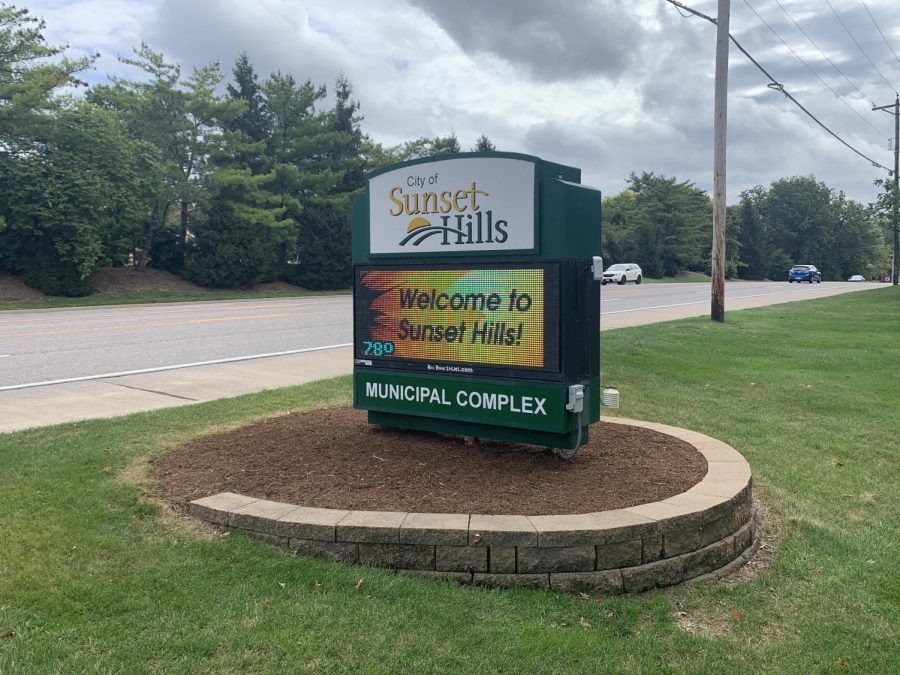Revenues exceeded expenditures by roughly $4.1 million last year for the Mehlville Fire Protection District, despite claims before the November election that the district was broke.
In addition, Mehlville collected $1,126,748 more in taxes last year than planned, Comptroller Jeff Geisler told the Call.
But Geisler insists there were no magic tricks used to disguise revenue to obtain passage of Proposition S, a 33-cent tax-rate increase approved by voters in November. Board of Directors Chairman Aaron Hilmer, meanwhile, says he has all the more reason to roll back the tax rate.
Mehlville spent $19.1 million in 2004, Geisler said, while raising $23.2 million, a surplus of $4.1 million from all funds combined — the general, ambulance, alarm and pension funds.
Despite the surplus, the district took $134,170 from the general fund and $75,960 from the ambulance fund to pump into the pension fund and sick-leave re-serve fund, according to an amended 2004 budget.
The general fund alone had a surplus of about $2.5 million, Geisler said.
Part of the increase — about $1.1 million — is a one-time revenue from the sale of the old No. 1 engine house to clear way for intersection widening at Lindbergh Boule-vard and Lemay Ferry Road. The district expected that revenue.
The remaining $1.4 million is from the unexpected tax money as well as attrition.
“The property tax we collected for the year came in much higher than we had anticipated,” Geisler said. Also, “there was personnel savings. We had several people who left during the year that we did not replace …
“This (surplus) is not the result of hocus-pocus for Proposition S,” he said.
And, the new tax revenue was the result of expedient tax disbursements from the county, so Geisler had no idea of it until he got the money, he said. Plus, all taxing districts will benefit, not just Mehlville.
“It’s (earlier tax disbursements) going to apply to everybody across the board,” he said.
Still, it is the second time the district’s general fund revenue has jumped since voters approved the 33-cent tax-rate hike in November.
In December, the board approved an amended 2004 budget that increased revenue by $1,095,245 to slightly more than $20.5 million.
The district’s new total revenues were $20,553,508, up from $19,458,263 and amended expenditures were $18,651,834, up from $18,331,311, according to amend-ed figures Geisler gave to the board at that time.
Now, however, revenues are up to $23.2 million and expenditures are at $19.1 million. In effect, the district ended 2004 with a balance, or reserve, of $22.2 million, up $4.1 million from last year’s $18.1 million.
And while the reserve is growing, so is new revenue. Mehlville should collect more money next year as well because property value assessments increased.
Collection on those assessments, however, is capped at the Consumer Price Index or 5 percent, whichever is less.
“(The $4.1 million surplus) lends even more credence to our goal of rolling back the 33-cent tax hike,” Hilmer told the Call.
“People were led to believe (the tax-rate increase) was a matter of ‘life or death,'” he said, referring to signs distributed by a political action committee that hinted the tax-rate increase was the “Difference Be-tween Life & Death.”
The $2.5 million surplus to the general fund is of particular note, Hilmer said, be-cause it most directly affects the services taxpayers receive.
“To put it in perspective, that is buying 10 new ambulances,” he said. “That’s a brand new firehouse out of nowhere.”
Geisler has said in the past that 2004 would be the last “break-even year” for Mehlville.
The district did better than breaking even, though, and Hilmer and running mate Bonnie Stegman have been scouring Mehlville’s budget to save money.
Citing fiscal waste, Hilmer and Stegman ran for election in April with the promise of rolling back the tax rate and reforming the district.
Since taking office, they’ve appointed a new fire chief, hired new legal counsel, promoted a deputy chief to assistant chief and began trimming employee benefits.
Employee sick leave has been cut in half to eight days, rather than 16, for 24-hour employees and 12 days for office employees, rather than 35. If the days aren’t used, employees get a $1,600 bonus, which would decrease $400 for every sick day used. However, if an employee is suspended or fired, they would forfeit the bonus.
And Mehlville will no longer pay for un-used sick leave.
Overtime pay has been cut from double-time to time-and-a-half for firefighters and 1.68-time pay for paramedics. Plus, em-ployees will no longer be paid overtime unless they physically work overtime.
Previously, employees were paid overtime even if they had taken a sick day during that pay period. And by cutting down sick days, overtime days will effectively be cut.
The union president no longer will be paid to conduct 12 hours of union business each month. That money now will be paid by the union, not taxpayers.
The board plans to cut employee clothing allowances from $950 a year to $500 per year and set up an account to purchase uniforms from a dealer when needed, rather than give employees a $500 check. If not needed, employees won’t get the $500.
And last week, board members cut their own pay from $100 a meeting to $50, and Hilmer says the board soon can meet just twice a month, rather than every week.
Overtime pay and sick leave are the major cost-savers and employee health insurance could be the next. Two insurance consultants presented alternate benefit plans recently that could save nearly $400,000 by requiring employees to pay a $500 deductible and 30 percent of dependent coverage.
Currently, employees pay no deductible and get 100 percent dependent coverage. The new plan also includes higher office visit fees.
Of course, Mehlville plans to spend more money in some areas.
The district has advertised to hire up to 13 new employees, though Hilmer said it could be as few as five at a cost of roughly $400,000, nearly the same amount he expects to save by switching health-care plans.
Each new hire would be cross-trained as both a firefighter and paramedic, so the district can begin making their pumpers EMS-ready by adding lifesaving support technology to firefighting vehicles.
“It’s going to improve services tenfold at a minimal cost to the taxpayers,” Hilmer said.





















